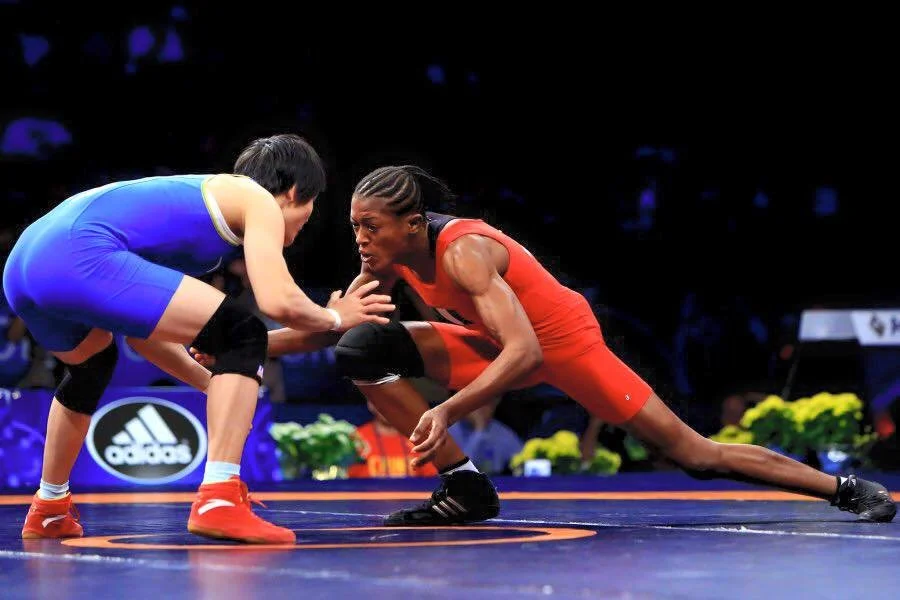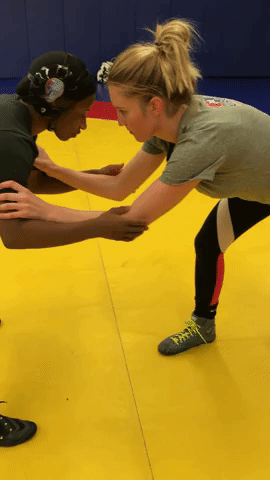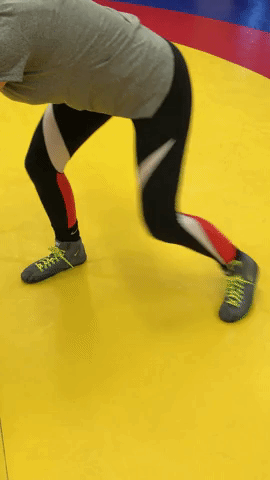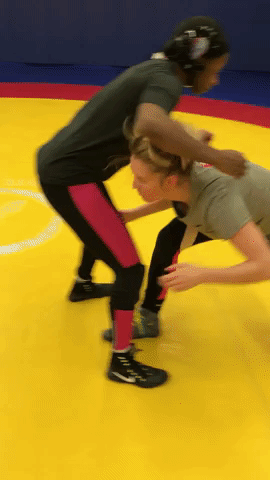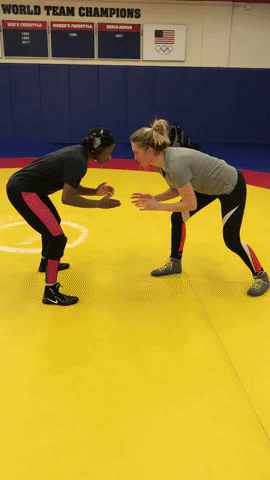How to Improve the Speed of Your Takedown
Our wrestling technique will take us far when we are working expanding our arsenal. But what about when we need to simplify our steps and create the most speed and efficiency with our movements? Surprisingly enough, in order to go fast, it means you need to start slow. By simplifying where your hands and feet need to go, you are putting yourself in the best possible position to quickly execute.
Similar to the blog on breaking down technique, we break this down into its relative parts. All of your problem areas will be helped by slowing down and recognizing the highlighted areas. You should begin with just one of these areas and repeat it over and over. Only once an area begins to feel natural do you move on to the next. When you are able to put the steps together with minimal corrections, begin completing your takedown for timing and for speed.
Hands inside
This may seem like a simple concept, but only works when we discipline ourselves to do it before each shot. We can get to the legs faster when our hands are on the biceps. This is because I am not being blocked by tying the hands at the colar tie. I guarantee that most of us are more focused on pulling the head, grabbing the hands, or getting a 2-on-1 (or a Russian tie for the half of the U.S. that uses that name). Sometimes we are trying to do all of these at once! But what happens when we grab our opponents? They grab back! When we hang, it makes it much easier for our opponent to telegraph our movements.
I didn't realize how focused I was on clinging to my opponent until my Japanese coach pointed it out. She directed me over and over again to get my hands inside. In order to make it stick, I practiced only putting my hands inside for the first part of my shot drills. The hand fight should be for insight position, and not to simply grab and pull.
Back foot first
Once our hand position is inside, how do we eliminate the space between ourselves and our opponents? Move your feet. With a staggered stance, moving our front foot first creates too much space between my feet. If my first step is with the wrong foot, I need to take extra steps which wastes precious seconds and causes a missed opportunity to shoot. Stepping with the front first first also means the weight is in that foot, and it is difficult if not nearly impossible to take a proper penetration step. Move that back foot first! I am actually putting my weight into my toes in order to take a big lunge step with my front foot towards my opponent. This is a temporary position. As soon as the back foot moves, I must take an immediate penetration step. I am simply reminding my body to shift the weight to my back foot so I can explode forward.
Penetration step
The timing and body position in this step are made to look simple for a reason. When I teach this technique, it is rare that I see an athlete execute this step properly the first time. They try to pull their opponent over top of them, step too far away, take more than one step, head is too low on the body, or hands are too low on the legs.
Since my weight is on the toe of my back foot, I can take a huge penetration step forward. My foot should come in line with my opponent's feet. Drill these movements back and forth how it is shown in the clip. This builds up leg strength and muscle memory. Every shot will not be perfect, and it's important to train your body how to take a step backwards and remain in your stance. This becomes valuable for when you need to change plans and get out of your takedown attempt. My head, chest, and arms need to be tight against my opponent. Ear lands on the hip, and there is no space between their legs and my chest. Arms should land high on the thighs and not behind the knees. The lower we are on the legs, the easier it is for our opponent to defend.
Putting it together
We are often taught as wrestlers that we need to execute everything while in the most complicated and hardest of circumstances. For example, we should do all our take downs while someone is pounding on our head. This is like telling a sprinter they should only ever train facing into the wind and never without this added variable. Sprinting faster than everyone else is a difficult variable enough. Even though it certainly has it's place in training, it's not necessary every time. It is certainly not conducive to learning. We need to offer our bodies and our minds variation so we can learn and create muscle memory. So bear with me when I request that you continue to practice the entirety of the movement with minimal variables.
When you put the pieces together, you must work on moving your feet quickly, keeping the pressure into your opponent, and following through to the mat. I don't finish my takedown by lifting my partner because I am training my reactions to move fast and hard immediately after my hands leave her biceps. Add a wrinkle when these movements become comfortable. Have your partner start with a change of reaction, or begin in a compromised position where you are tied up.
I'll remind you what I said in step one about why we want inside position: We can get to the legs faster when our hands are on the biceps. After plenty of practice, the way you push and pull your opponent will become more fluid and be more conducive towards taking a shot. However, do not add this in until your natural reactions start bringing your hands inside to the biceps. I have always seen (and know from personal experience) that an athlete who is too afraid to shoot is only afraid because they are having trouble getting their body in the right position to be offensive. They can sense the danger and are not equipped with the right tools to attempt offensive technique. Learn how to work on leg strength in order to remain in your stance and take a penetration shot properly. Train your hands to over come the need to pull and cling onto too many options at once. This will give you confidence in your ability to execute offense by always being in the right place at the right time.

